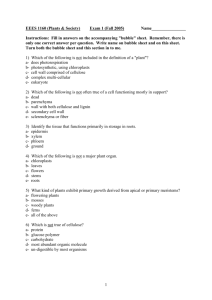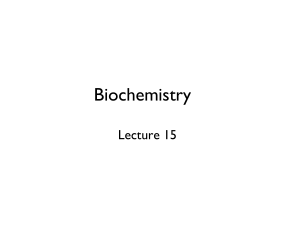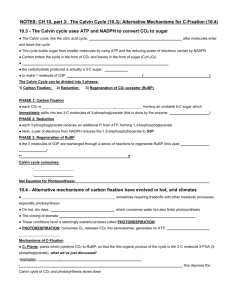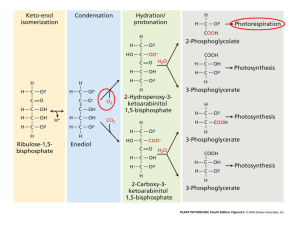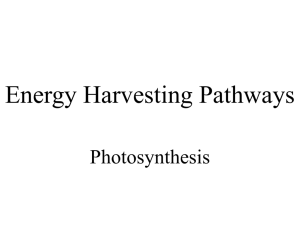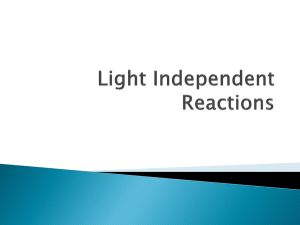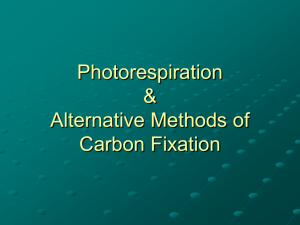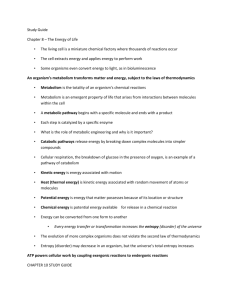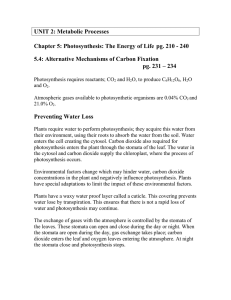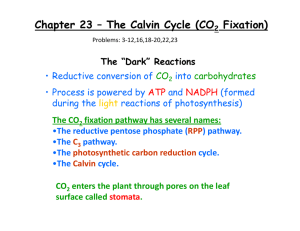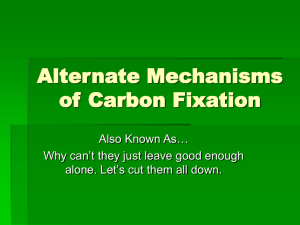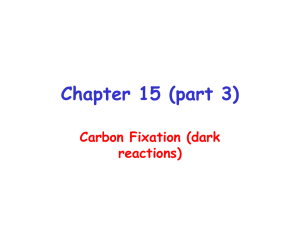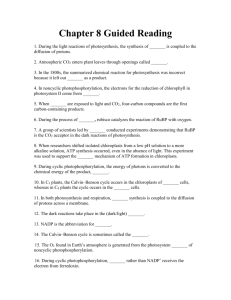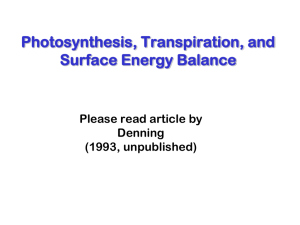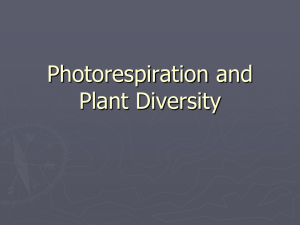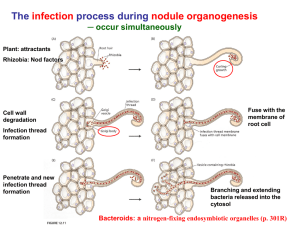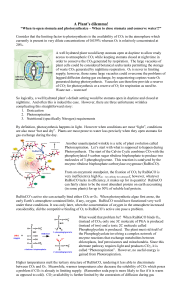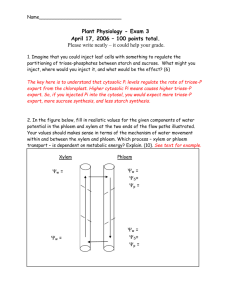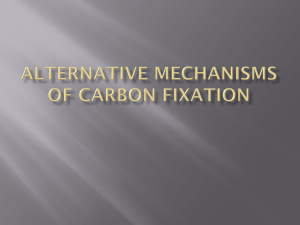Cost/Benefit Trade-Offs of CAM and C4 vs C3
advertisement
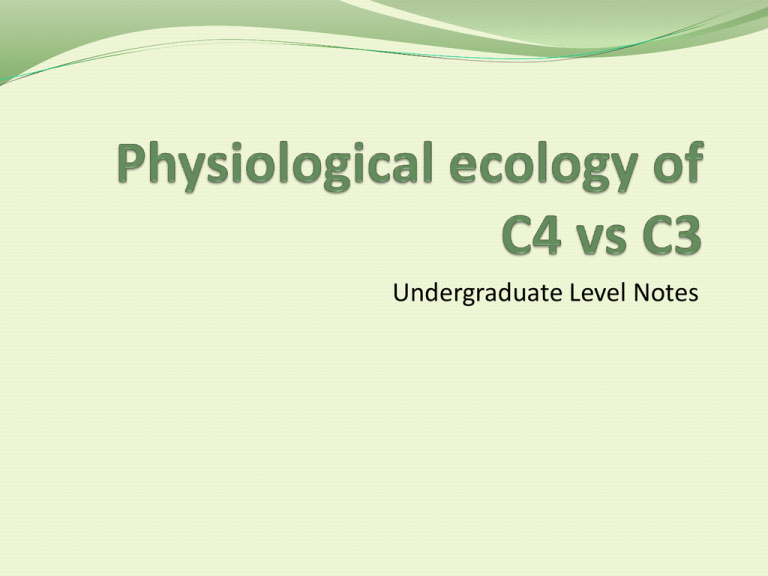
Undergraduate Level Notes Compensation Point An important physiological parameter in comparing C3 and C4 photosynthesis is the compensation point, Γ. Γ is effectively the CO2 concentration at which there is no net uptake (or loss) of CO2, because fixation = photorespiratory release. C4 plants have a lower Γ than C3 plants – i.e can have a net uptake of carbon at a lower concentration of CO2 – because photorespiration is suppressed by the CCM. Advantages of C4 Allows RuBisCO to perform close to its Vmax by concentrating CO2 around it to 1-2% (cf. 0.04% atmospheric), so reducing wasteful photorespiration (more detail in “Why do Plants and Algae need CCMs?”). This is represented by C4 plants having a lower Γ than C3 plants, as shown above (ca. 10 ppm, cf. 40-60ppm in C3 plants) Advantages of C4 Greater water use efficiency – that is, due to a greater efficiency in assimilating carbon, the same amount of fixation can be achieved by a C4 plant as a C3 plant with less stomatal opening and thus less water loss. In other words a C4 plant assimilates more molecules of CO2 per unit water lost than does a C3 plant. So why don’t C4 plants completely outcompete C3 plants? Costs of C4 Higher energetic demand of C4 pathway: fixing carbon twice requires 30 ATP to generate the equivalent of 1 glucose (i.e. there is a cost in regenerating PEP), compared to 18 ATP used by the Calvin cycle alone in C3 photosynthesis. Thus, while C3 entails costs associated with photorespiration, C4 entails energetic costs associated with “double fixation” and regenerating PEP – this leads to an interesting ecological trade-off. Trade-Offs Different environmental conditions tip the balances of costs and benefits in favour of C4 or C3 photosynthesis. The oxygenase activity of RuBisCO, which creates the need for wasteful photorespiration – the greatest cost to C3 photosynthesis – increases with temperature. At low temperatures, photorespiration is therefore less of a problem, so the energetic costs of C4 outweigh the photorespiratory costs of C3, favouring C3 photosynthesis. Trade-Offs As the temperature increases, oxygenase activity of RuBisCO increases at a greater rate than does the carboxylase activity (e.g. from 20°C–30°C , carboxylase activity doubles, but oxygenase activity trebles) Furthermore, CO2 solubility decreases as temperature increases, resulting in a lower effective concentration around RuBisCO. Therefore at higher temperatures, the balance of benefits and costs swings in favour of C4. Trade-Offs There is of course a cross over range: at temperatures of around 20°–25°, the energetic costs of C3 and C4 processes are similar: around 5ATP and 2NADPH per CO2 assimilated, including the respective costs of photorespiration and PEP regeneration. These temperature-dependent trade offs have important consequences for the distribution and diversity of C4 plants. Geographic distribution of C4 Given the above, it should be no surprise that C4 plants evolved in the warm tropics (note that C4 has evolved independently, and convergently, many times in different plant families). However, like anything in biology, there are no steadfast rules with the distribution of C4 and C3 plants: the relative ecological successes of different plants depend on far more physiological factors than just the mechanism of carbon fixation they employ. As such, C4 plants are not resticted to the tropics, and can be found in temperate regions, just as C3 plants are found in the tropics. Phylogenetic Distribution of C4 C4 photosynthesis is found in only around 3% of terrestrial plant species, and about 5% terrestrial plant biomass, but accounts for up to 30% terrestrial C fixation. 7600 species C4 – all Angiosperms (flowering plants) 15 families of Dicot and 3 Monocot – but 40% Monocot speacies, cf. 4.5% Dicot species. Includes crop plants maize, sorghum, millet, sugar cane, as well as many of the worst weeds. Summary C4 plants have a lower compensation point than C3 plants. Multiple costs and benefits trade off under different environmental conditions such that neither C3 or C4 is always the better strategy. These trade-offs determine the geographical distibution of C4 plants. C4 has evolved many times independently amongst both Monocot and Dicot families.
